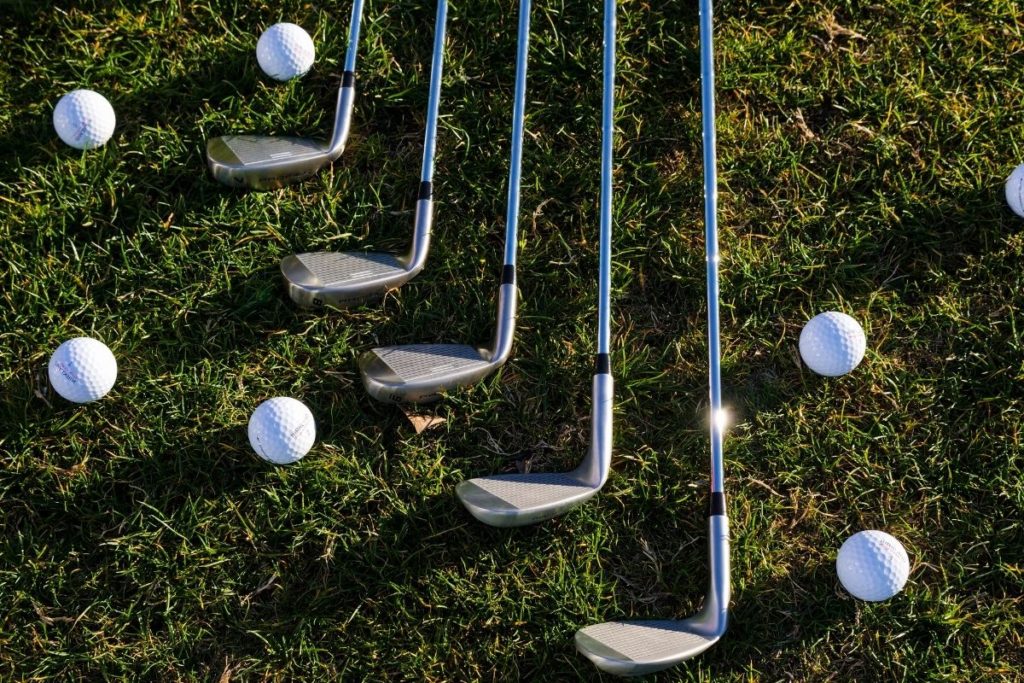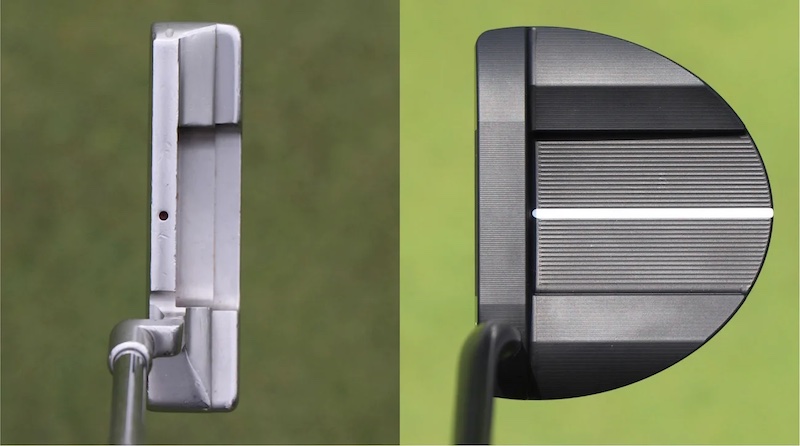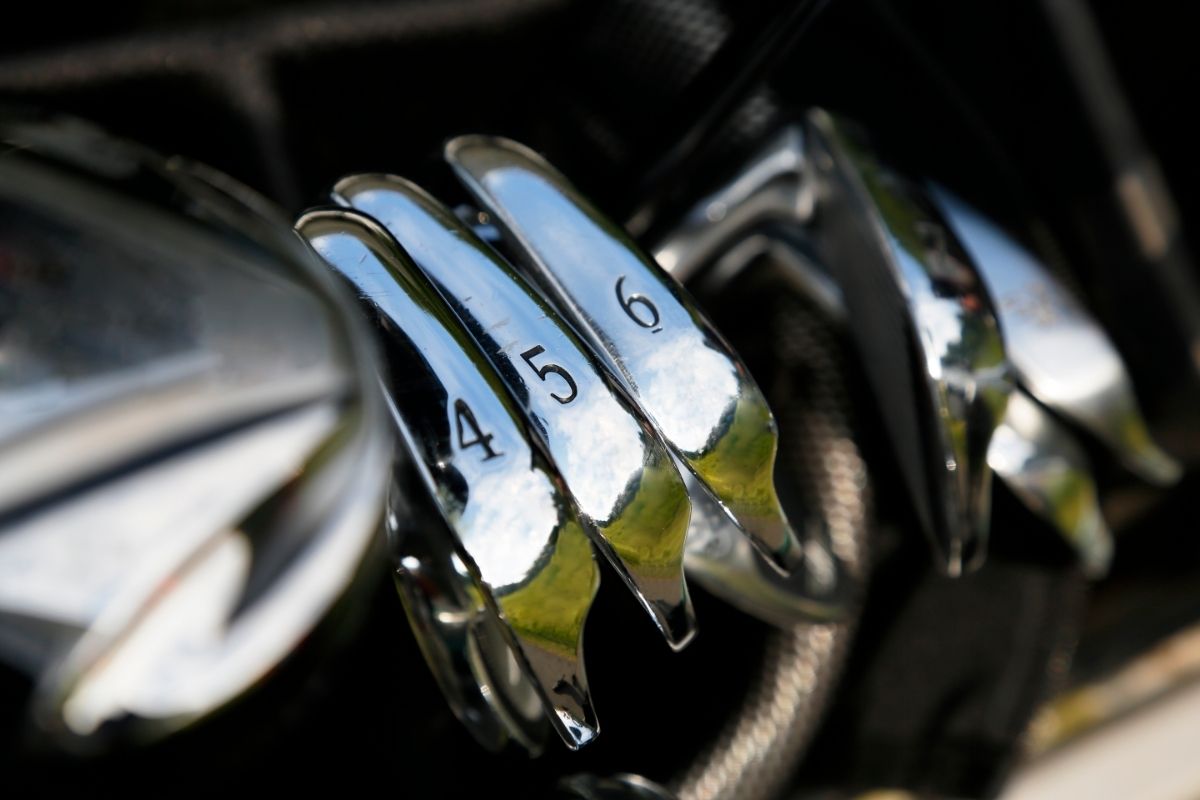If you are new to the game of golf, its rules can be somewhat confusing and challenging to get your head around.
As well as getting your head around the rules and regulations of golf, you will also need to understand the specifications of certain types of equipment.
As well as the golf balls, the golf clubs you use are vital for performing well. For those new to golf, it is common to wonder how golf clubs actually work.
A lot of thought and science goes into the design of golf clubs to ensure they suit all scenarios and terrains on different courses.
While you probably know that golf clubs are used to hit golf balls, you may not know why there are so many types of golf clubs in a golf bag.
Then, there are the numbers etched onto each club and the different shaped clubheads. What do these numbers mean?
In today’s article, we will be answering these questions and more. So, if you want to find out how golf clubs work and why there are different types, read on as we discuss golf clubs in detail.
Golf Club Numbers: What Do They Mean?
For those of us who have played golf before, we would have noticed different shaped golf clubs. Not only are these clubs unique from one another, but some are marked with particular numbers.
While you may think that these are just manufacturer numbers or simply random, this is not the case. These numbers simply refer to the angle of the golf clubface known as the ‘loft.’
Golf club numbers range from two to nine. However, not every club is numbered.
Numbered golf clubs:
- 3-wood
- 5-wood
- 2-iron
- 3-iron
- 4-iron
- 5-iron
- 6-iron
- 7-iron
- 8-iron
- 9-iron
The non-numbered golf clubs are:
- The Driver
- The Pitching Wedge
- The Sand Wedge
- The Lob Wedge
- The Putter
When the loft of a club is adjusted, the height and/or distance of the golf ball being struckwill be impacted.
The lower a golf club’s number, the lower its loft will be. This simply means that the clubface’s angle is not as prominent. Therefore, the golf ball can and should travel further but at a lower height.
If a club has a higher number, it will have a higher loft. This means the angle of the clubface is more profound.
As you can guess, this has the opposite effect to those with lower lofts. The golf ball will travel higher in the air but over a shorter distance.
Average distance of common golf clubs
When we consider the clubs mentioned above, their loft numbers can help us estimate the average distance each club can hit a golf ball.
| Club | Average distance |
|---|---|
| Driver | 230 yards |
| 3 wood | 210 yards |
| 5 wood | 105 to 210 yards |
| 2 iron (4 wood) | 190 yards |
| 3 iron (5 wood) | 180 yards |
| 4 iron | 170 yards |
| 5 iron | 160 yards |
| 6 iron | 150 yards |
| 7 iron | 140 yards |
| 8 iron | 130 yards |
| 9 iron | 120 yards |
| Pitching wedge | 110 yards |
| Sand wedge | 90 yards |
| Lob wedge | 65 yeards |
Of course, a putter is used for more delicate shots on the green when force and distance are not as important.
By looking at the numbers of different clubs above, they can help give you some perspective on which club is best for certain distances and situations on the golf course.
The more you play golf, the more you will realize that physics plays a vital role in the sport.
By learning the certain angles of golf clubs, you can correctly play the right shots in important moments of the game.
3 And 5 Wood vs 3 And 5 Iron

You may have noticed 3 and 5 wood clubs and 3 and 5 iron clubs above. Although they share the same numbers, the difference between these is the material used in the construction of the clubs.
While a 3 wood and 3 iron would have equal loft angles, just as a 5 wood and 5 iron would, the different materials they are made from means they are better suited for various types of shots on the golf course.
While 3 and 5 iron clubs are made from iron, their purpose is not for the golfer to play longer distanced shots. For shots ranging around 210 yards, a 3 wood is best suited.
A 3 iron would be best for shots in the range of 180 yards so a significantly shorter distance. A 5 wood club is best for shots of around 180 yards whereas a 5 iron is best used for distances of approximately 160 yards.
Just because iron is a harder material than some other metals, it doesn’t mean the golf ball will always travel further.
Nevertheless, a 5 wood, and a 3 iron are typically used for equal distanced shots. Therefore, these clubs should be chosen based on the loft you require for a particular shot.
What are the differences between wood and iron golf clubs?
Wood golf clubs are considered to be long-range clubs. These are typically used at the beginning of a hole when teeing off. However, some very long courses will see a wood golf club used for the second swing.
As for their design, wood club heads are typically large and circular with a flat frontal design to cleanly strike the ball hard.
Iron golf clubs are typically used after you have teed off. The design of these clubs is different from wood clubs as irons tend to have more intense angles.
The majority of golfers also have more iron golf clubs in their bags than wood clubs so they can have a particular model for particular shots over different courses.
Different Types of Golf Clubs

Most golfers will carry 12 clubs with them on the golf course. Each club is unique and specially designed for specific purposes.
But, when you are playing eighteen holes with varying distances and terrains, each club will usually be used at least once during a game.
Wood Golf Clubs
We have already discussed what sort of shots wood golf clubs are used for on a golf course but why are they called woods when they are actually made from metal? Well, the answer is simple. Before the 1980s, wood clubs were made from wood.
Metal became the preferred material because of a few reasons such as its lower center of gravity. Wooden clubs can not achieve this as they can not be molded into precise shapes in the way metal can be.
Woods are usually used for shots that are around 175 yards or more from the green. If you are closer than this, woods are not as effective.
As for the driver, also referred to as a 1 wood, this club has a very low loft. This loft is typically between 7 and 12 degrees making it ideal for long-distance shots. But, if you’re looking for more height, a driver would not be the best option.
The club head of a driver is typically made from titanium alloy or steel while its average length is around 45 inches. This longer length means that it can be pretty difficult to swing the club, especially for beginners.
When you’re on the course, a driver is best suited for shots off the fairway. However, even some professionals find these shots hard with a driver due to their low loft. This means trying to achieve much height is somewhat difficult.
The 3 and 5 wood golf clubs that most golfers carry in their bags are commonly referred to as fairway woods. As you can probably guess, this is because they are typically used for their second shots on the fairway (unless you’ve mishit and the ball has gone into the rough).

A 3 wood golf club has a typical loft of between 15 and 18 degrees while a 5 wood can have a loft of between 20 and 22 degrees. So, for further shots, you would go with the 3 wood and for higher shots, you’d choose the 5 wood.
You can also use a 2 wood on the golf course but these are not as common. With evolving technology and supreme designs, 2 and 4 wood golf clubs are somewhat redundant and rarely used compared to a few decades ago.
Iron Golf Clubs
Iron clubs are usually used for shots that are less than 200 yards away from the green. The closer you get to the green, the higher the irons will generally be.
A set of irons typically includes numbers 3, 4, 5, 6, 7, and 8 as well as the pitching wedge. Whether it’s a long-range shot or a short shot, these clubs can be used on all 18 holes.
When you first compare woods or hybrids with irons, you will immediately notice how much thinner iron golf clubs are. This skinnier design can help golfers achieve more accurate strikes on the course.
While accuracy is important from the tee-off, it becomes even more critical the closer you get to the hole. Therefore, you will want to choose the right club for every shot.
With deeper grooves on an iron’s clubface, you can usually generate a more exaggerated spin on the ball. This can be extremely useful when navigating tricky greens where the ball may easily shoot off and travel too far.
That being said, beginners will not see much difference when using some of these clubs. To really experience the benefits of these golf clubs and their distinctive designs, you would need to practice regularly.
This is why it is only experienced golfers who tend to benefit from the intricacies of these clubhead’s designs.
Hybrids
You may have heard of hybrid golf clubs. In recent years, these have become increasingly popular with golfers as they combine a fairway wood’s head design with the shaft length of an iron.
For more experienced golfers, these hybrids can help improve their skill levels quite significantly.
If a golfer chooses to use a hybrid, they will usually replace other clubs. More often than not, it’s longer irons, like the 3 and 4 irons that are replaced. By using hybrid golf clubs, the playability can be improved.
Hybrids are best suited to more experienced golfers. For beginners, it is better to stick to standard golf clubs and learn how these feel for different shots.
As you progress, you can move on to some hybrid models and discover if they have any beneficial effect on your game at all.
Wedges
Wedges are a must for every golfer. This is why the majority of players have at least one or two in their kit bag. The loft of a wedge tends to increase around 4 lofts meaning each one is best suited for specific types of shots.
Overall, there are 4 main types of wedges:
- The gap wedge
- The lob wedge
- The sand wedge
- The pitching wedge
A gap wedge is also called an approaching wedge. These wedges are best for longer distances and if you want to ensure the best accuracy possible, gap wedges are also useful closer to the green.
A lob wedge is ideal for very high shots that also require quite a bit of spin. Lob wedges help golfers achieve more power when striking the golf ball close to the green. So, if you need to spin the ball back toward the hole, a lob wedge is the club to use.
The sand wedge is the most widely used out of all the wedges. This is because it is best for those shots out of the bunker, we’ve all been there more than we’d like to admit!
Although sand wedges are not ideal for long-distance shots, they are a great club to use for striking the ball high off the ground to get out of precarious situations.
A pitching wedge will usually be placed with a set of irons and sold with an iron set. This is one of the more versatile clubs in the kit bag as it can help you hit high shots that land on the green with as little backspin as required.
Putters
Putters may not be as powerful as wood or iron golf clubs but they are just as important. The main purpose of a putter is to hit the golf ball with precision and accuracy so it goes into the hole.
A putter’s design helps golfers achieve this accuracy for short distances on the green and low-speed strokes.
Go into every golf bag and you will find a putter. Upon closer inspection, you will find that putters feature a steel shaft as well as a grip on the shaft allowing your thumb to rest comfortably during shots.
As for the face of a putter, these can vary from one to another. Nevertheless, the majority tend to be completely or somewhat flat. The clubface of putters is generally a lot smaller than other types of clubfaces too.
The two main types of putters
- The blade putter
- The mallet putter

A blade putter is designed with a small head which is the most commonly used by golfers. For the best accuracy possible, blade putters should be the club of choice.
Mallet putters may not be as common as the blade type but over recent years, they have become more popular with golfers.
As the name suggests, a mallet putter is top-heavy like a mallet. The clubhead’s weight is quite far from the club’s face which helps stabilize the putter head as you strike the golf ball.
If you’ve done all the hard work of getting the ball to the green and you have a straight shot left to the hole, a mallet putter is your best option.
Different Shafts
You can choose between steel and graphite shafts on your golf clubs. Steel shafts are superb for extra strength and stability through the strokes.
However, these tend to be much heavier than their graphite counterparts. As you can imagine, the heavier a shaft on a club is, the more power and effort are needed to swing fully. But, for larger built, stronger individuals, a heavier steel shaft shouldn’t be an issue.
Experienced golfers may find it easier to use steel shafts to strike the ball with more accuracy and for their intended distances with more ease. For beginners, heavier shafts are typically difficult to use.
As for graphite shafts, these are lighter so the speed of the swing is generally faster resulting in longer distanced shots.
Graphite iron shafts tend to be the better option for beginners or for those who do not possess a great deal of strength. These will help novices become more familiar with their swing and be more comfortable to use.
A Full Set of Clubs
A full set of golf clubs usually adds up to 14. For tour players who compete in an event, 14 is the total number of golf clubs allowed in their bags.
If you’re an amateur golfer, you can carry far more with some carrying up to 18 or 20 clubs in their bag.
This is usually down to the fact that some golfers carry hybrid clubs with them as well as their standard models to help them achieve the best shots possible.
In Conclusion
The best way to learn about golf and its many intricacies is to play it as much and as often as possible. We hope this guide has helped you understand the difference between the golf clubs in a kit bag so the next time you hit the course, you know whether to use a 3 wood, a 5 iron, or another club to win that round of golf.

